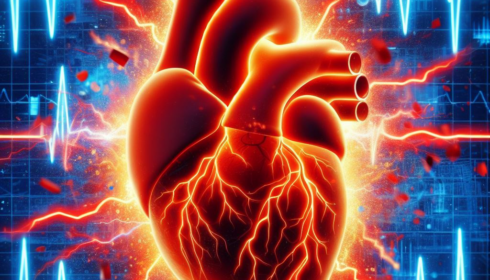DOREMI

Milrinone as compared with Dobutamine in the Treatment of Cardiogenic Shock
Matthew. N Engl J Med 2021; 385:516-525, doi: 10.1056/NEJMoa2026845
Clinical Question
- In patients with cardiogenic shock, does milrinone as compared with dobutamine improve the composite outcome of in-hospital death, resuscitated cardiac arrest, receipt of cardiac transplant or mechanical circulatory support, non-fatal myocardial infarction, cerebrovascular event or renal replacement therapy?
Background
- Cardiogenic shock is defined as a low cardiac output state resulting in clinical and biochemical evidence of end-organ hypoperfusion
- Revascularization reduces the risk of death in patients with cardiogenic shock complicating myocardial infarction1. However, there is a paucity of evidence relating to other therapies for the management of cardiogenic shock
- Vasoactive agents have become the mainstay of treating cardiogenic shock. Noradrenaline is commonly used with apparent superiority to adrenaline and dopamine2,3. Other agents such as milrinone and dobutamine have also been used, and each has purported benefits according to pharmacological profile. In the absence of robust comparative data, the use of each agent is often based on clinician preference and the theoretical benefits related to their mechanisms of action
Design
- Randomized controlled trial
- Single, quaternary centre
- Computer-generated randomization with stratification on left ventricular, right ventricular or bi-ventricular failure
- Blinding; treating physicians, patients, local investigators and outcome-assessors were blinded. Bedside nurses were not blinded
- Based on a power of 80%, a sample size of 192 patients would provide the ability to detect a between group difference in the primary outcome of 20%, with a two-sided alpha level of 0.05. This was based on a pooled incidence of the composite primary outcome estimated at 55%
Setting
- Single quaternary cardiac ICU in Ottawa, Canada
- September 2017 – May 2020
Population
- Inclusion:
- Acute cardiac ICU admission
- Adults
- Cardiogenic shock meeting the Society for Cardiovascular Angiography and Interventions (SCAI) definition of cardiogenic shock B,C,D or E
- Exclusion:
- Unable or unwilling to consent
- Pregnant
- Out of hospital cardiac arrest
- Clinicians preference for a specific inotrope
- 192 participants
- Comparing baseline characteristics of intervention vs. control group
- 96 in Milrinone and 96 in Dobutamine
- Age: 68.9 vs 72.1
- Male: 62% vs 65%
- Median LVEF 25% vs 25%
- Ischaemic ventricular dysfunction: 69% vs 65%
Intervention
- Milrinone
- Commenced milrinone as an infusion and titrated from stage 1 to 5:
- Stage 1: 0.125mcg/kg/min
- Stage 2: 0.250mcg/kg/min
- Stage 3: 0.375mcg/kg/min
- Stage 4: 0.500 mcg/kg/min
- Stage 5: > 0.500mcg/kg/min
- Titration was conducted in a blinded fashion by the treating physicians based on clinical judgment
- Commenced milrinone as an infusion and titrated from stage 1 to 5:
Control
- Dobutamine
- Commenced dobutamine as an infusion and titrated from stage 1 to 5:
- Stage 1: 2.5mcg/kg/min
- Stage 2: 5mcg/kg/min
- Stage 3: 7.5mcg/kg/min
- Stage 4: 10mcg/kg/min
- Stage 5: >10mcg/kg/min
- Titration was conducted in a blinded fashion by the treating physicians based on clinical judgment
- Commenced dobutamine as an infusion and titrated from stage 1 to 5:
Outcome
- Primary outcome: no significant difference in the composite of in-hospital death, resuscitated cardiac arrest, receipt of cardiac transplant or mechanical support, non-fatal myocardial infarcation, cerebrovascular event or renal replacement therapy. Comparing milrinone vs dobutamine group
- 49% vs 54% (RR 0.9, 95% CI 0.69 – 1.19, p = 0.47)
- Secondary outcomes: Comparing milrinone vs dobumatine groups: No significant differences between remaining individual components of the primary outcome or other notable secondary outcomes:
- In-hospital death from any cause
- 37% vs 43% (RR 0.85, 95% CI 0.6-1.21)
- Arrhythmia requiring medical intervention
- 48% vs 44% (RR 1.19, CI 0.85-1.57)
- In-hospital death from any cause
- Changes in key clinical, biochemical and haemodynamic measures:
- No significant differences were found between the two groups in heart rate, blood pressure, urine output, vasoactive-inotrope score, creatinine or lactate
Authors’ Conclusions
- In patients with cardiogenic shock, no significant difference between milrinone and dobutamine was found with respect to the primary composite outcome or important secondary outcomes
Strengths
- High quality trial: double-blinded, pragmatic trial design
- Important clinical question addressed in the largest trial to date comparing dobutamine and milrinone in patients with cardiogenic shock
- Clinical criteria used to define cardiogenic shock rather than haemodynamic parameters, reflecting a bedside diagnosis and common clinical practice
- Most patients included in the study represented SCAI class C and D cardiogenic shock – a clinically relevant group. Accordingly, the in-hospital mortality reported in this group of 37-43% mirrors mortality rates described in previous studies
Weaknesses
- Only 7% of patients in this group required either non-invasive or invasive mechanical ventilation and therefore the cohort may not be representative of patients with cardiogenic shock in other institutions
- Time from admission to ICU to randomization was 17 – 24 hours in each group. A potentially significant time passed prior to any inotropic intervention in what may be considered a critical period for patients with cardiogenic shock
- Dose adjustments in each group were based on physician judgement rather than by a standardized protocol. Therefore, potential differences may have arisen between the groups, due to dose adjustments and associated resuscitative efforts
- 63 of the patients screened were excluded due to physician preference or due to inability to obtain consent. This population may have influenced the outcome
- This was a single-centre study and the results may not be generalizable
- The study was powered to detect a relatively large treatment effect (11% absolute reduction) in the primary composite outcome. It was underpowered to detect smaller treatment effects
- The study was not powered to detect significant differences in the individual components of the composite primary outcome. These components had RR that moved in opposite directions, signalling potential differences that need dedicated trials to explore
The Bottom Line
- This trial found no significant difference in important outcomes between milrinone and dobutamine for patients with cardiogenic shock
- Signals from this trial challenge historical beliefs including 1) dobutamine is associated with more dysrhythmia and 2) milrinone is associated with greater hypotension
- The study was not powered to detect smaller differences in the composite outcome or individual components of the primary outcome. These differences may exist and may be clinically significant. Therefore, the trial may be considered inconclusive rather than “another negative trial”
- There will continue to be situations where patient factors, variations in pharmacological profile and practical differences between milrinone and dobutamine guide my decision to use one agent over the other
External Links
- Article Milrinone as Compared with Dobutamine in the treatment of cardiogenic shock
- Further Reading Early Revascularization in Acute Myocardial Infarction Complicated by Cardiogenic Shock
- Further Reading Epinephrine Versus Norepinephrine for Cardiogenic Shock After Myocardial Infarction
- Further Reading Comparison of Dopamine and Noradrenaline in the Treatment of Shock
Metadata
Summary author: Aniket Nadkarni @aniketnadkarni
Summary date: 20/08/21
Peer-review editor: Luke Collett @luke_col


